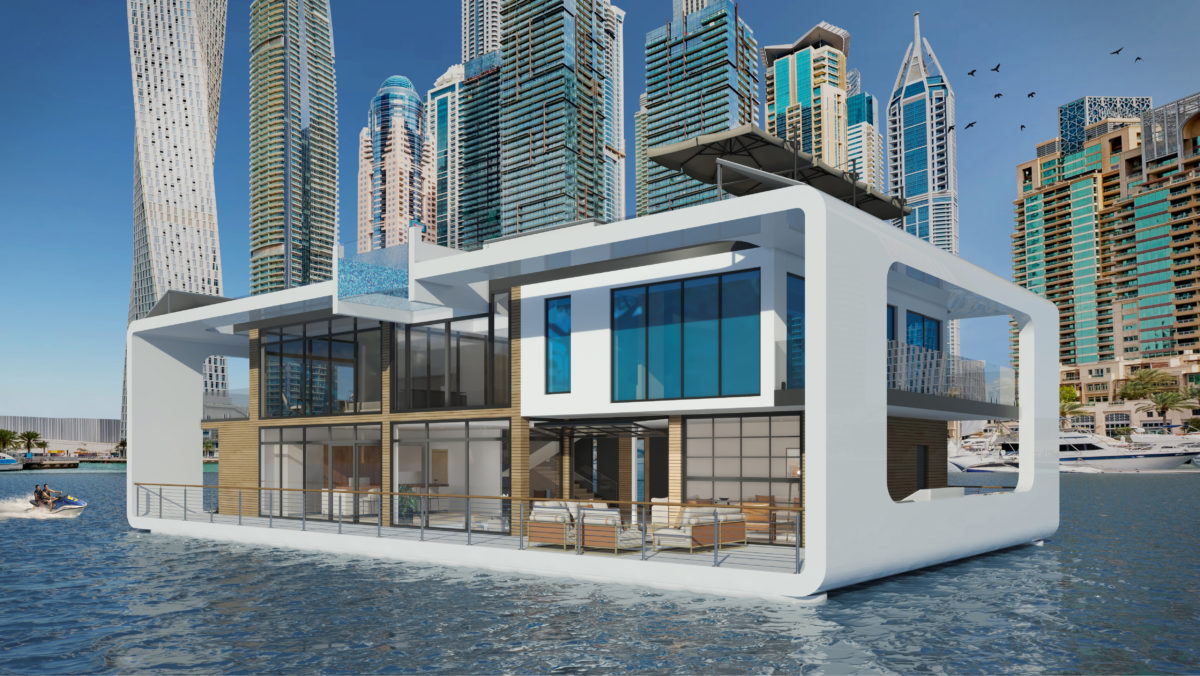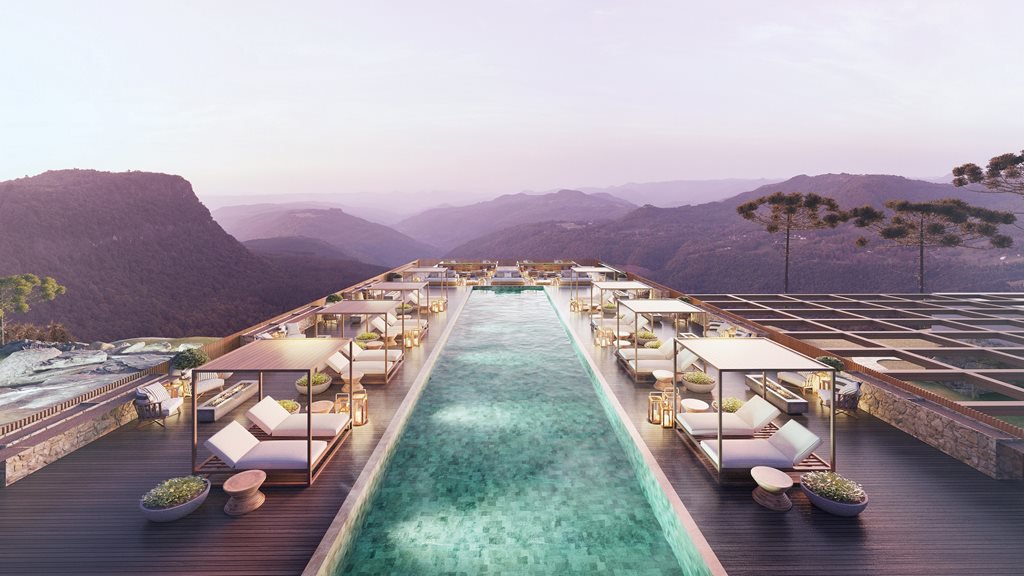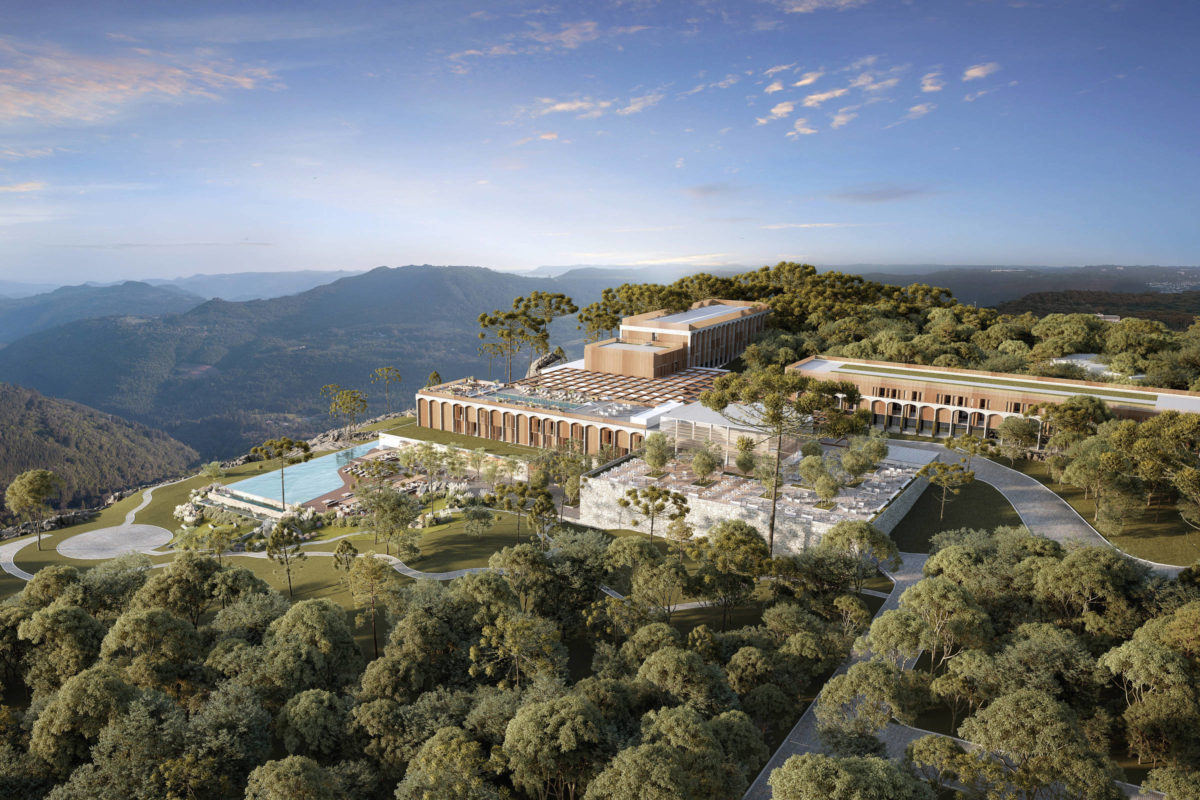By John O’Ceallaigh
Although Dubai has no shortage of luxury hotels, it might not be until 2023 that a new arrival might seriously compete with Jumeirah’s long-standing Burj al Arab to be known as the emirate’s most audacious property. Expected to launch off Jumeirah Beach Road that year, Kempinski Floating Palace is an ostensibly self-explanatory building that will bob above the water, between the Burj and Four Seasons’ Jumeirah Beach Resort, with the artificial islands that form the map-shaped The World archipelago just slightly further out to sea.
The 156-key Kempinski Floating Palace’s centrepiece will be a somewhat conventional hotel building that will incorporate the bulk of the property’s amenities. They are expected to include ‘four or five’ restaurants, a spa, boutiques, spa, and generous fitness and wellness facilities including multiple swimming pools. This hub will be topped by a glass pyramid and will include an atrium that will be sufficiently large to allow substantial yachts to sail into the building.

Another notable addition to the hotel’s inventory will be the 12 standalone villas that are connected to the main building by floating bridges. To be made available for private purchase but also available for rent to hotel guests, the two-storey structures will have either two, three or four bedrooms, alongside roof terraces, infinity pools, crew and staff rooms, indoor and outdoor living rooms, and ‘all the technical features of a smart home’. Their standout USP, however, is that they can be detached from their walkways to sail the surrounding waters autonomously at speeds of up to six nautical miles. Though it’s unlikely guests would choose to sail to Abu Dhabi, as someone from Kempinski suggested to me – it’d take about 11 hours, while it’s a one-hour drive – the vessels should provide a fun means of taking in the Dubai skyline from the water.
The hotel will also offer a berth for 16 yachts and a helipad, and frequent shuttle services will connect the property with the mainland, so connectivity won’t be a problem. While the property looks and sounds fanciful, its developers are confident it will operate without a hitch and that it will be delivered on time: the project’s Egyptian engineers have used similar methodologies to develop products for the Nile, and construction of the property is currently taking place off-site, in dry docks in Dubai. There are claims, too, that this will be the world’s first floating hotel, though that’s not quite accurate. In England, the static Sunborn London Yacht Hotel occupies a converted ship by the ExCeL conference centre; in Scotland, Fingal Edinburgh is another converted ship permanently berthed at Leith waterfront. In Tanzania, the Manta Resort’s inventory includes a standalone suite that floats in the water surrounding Pemba Island.


The Kempinski Floating Palace launch was a surprise announcement at the ILTM luxury-travel conference by Kempinski, the Swiss-based hotel group that was founded in the 19th century. Still frequently associated with traditional heritage properties in Europe, the group has recently announced plans to launch a range of diverse properties. In 2023, the group will launch two safari lodges and an additional tented camp in Tanzania, with another lodge to launch by Tanzania’s Ngorongoro Crater in 2024, to provide a complete safari circuit of the country. In 2024, the property’s first South American hotel will open in Brazil; designed by Oscar Niemeyer protégé Edgar Graeff, a 1978 hotel is currently being renovated and will reopen then as Kempinski Laje de Pedra Hotel and Residences with multiple restaurants and bars, a 1,000sq-metre wellness centre and various terraces overlooking the mountains of plains of Canela. (According to Kempinski, this is ‘the most attractive inland region in Brazil, with easy access to excellent exclusive wineries, to the breathtaking gaucho canyons and to [the Rio Grande Highlands].’ The hotel is shown below.)


When I spoke to recently appointed Kempinski CEO Bernold Schroeder about these latest launches, and my surprise about the more ambitious steps being taken by his generations-old company, he explained there’s a misconception that Kempinski wants to remain rooted in heritage properties in Europe: fans of the brand should expect to see a more diverse global portfolio emerge in the years to come. As for what makes Kempinski hotels so special, he says it’s down to service. Everyone always says that, but he did back it up more convincingly than most: Kempinski provides each member of staff with 200 hours’ worth of training per year, so about five weeks’ worth, and has an active HR policy of promoting talent from within, meaning significantly stronger staff retention rates than those currently being endured by much of the hotel industry at a time when personnel have been leaving the sector in droves.
Nightly rates for Kempinski Floating Palace in Dubai have yet to be announced. You can learn more about forthcoming properties on the Kempinski website.
LUTE is a luxury-travel consultant and content agency that works with hotel groups, tour operators, tourist boards, airlines and more. You can learn more about LUTE here.
